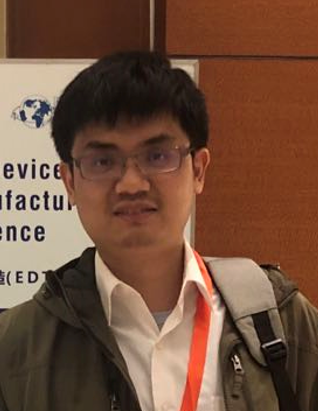Peng Huang
Oxide Materials and Devices
Peking University,Room 419, Weina Building, Peking University, No. 5 Yiheyuan Road, Haidian District, Beijing. China
Email: phwang@pku.edu.cn
Biography
Dr. Peng Huang is assistant professor in Peking university. His main research is new computing paradigms based on memristors, which includes deep neural network, nonvolatile logic gate, neuromorphic computing, and so on. His most important achievements include: 1) Proposal of the novel computing method to efficiently implement the functionally complete stateful logic operation and logic cascading with RRAM. The proposed computing method of stateful logic operation is highly evaluated by Prof. R. Stanley Williams, who is the discoverer of memristor. Proposal of the digital in-memory computing method for vector-matrix multiplication to address the decrease of computing accuracy due to the variation of NVM. The applicant first created a flash-based in-memory computing chip for efficient convolution computing. The chip can simultaneously execute 324 groups of convolution computing. 2) Proposal of the method to model the microcosmic physical processes involved with the resistive switching process as the evolution of morphology and feature of conductive filament. The applicant built a set of comprehensive models of RRAM to accurately describe the analogue resistive-switching, stochastic resistive-switching, threshold digital resistive-switching and other in-memory computing related electrical characteristics. The developed models are adopted by the researchers from different institutions, such as Stanford Univ., IMEC, Georgia Tech., ARM, etc. Besides, the applicant established a platform for the device-circuit-architecture-algorithm codesign of NVM-based in-memory computing system, which achieves the computer aided design and optimization. He has published more than 100 papers including nature electronics, IEEE EDL, IEEE TCAS, Advanced Materials, and IEEE IEDM. He was the recipient of the National Science Fund for Excellent Young Scholars.
|
|
Abstract for Presentation
Understanding of the volatile and non-volatile switching in Ag-based memristors
In this paper, we fabricated Ag-based memristive devices with different stoichiometries of silicon suboxide (SiOx) dielectric layers, which can both exhibit volatile and non-volatile switching behaviors. We found that the volatile and non-volatile switching can transfer each other by varying the compliance current as shown in Figure 1. The experimental results showed that the large SiOx film density will lead to large threshold voltage and high stoichiometry of SiOx film will lead to high compliance current for transition from volatile to non-volatile characteristic in Ag-based memristors. To understand the experiments, a model based on classical nucleation theory was proposed to explain the transition current in different samples. It was found that the volatile and non-volatile switching behaviors had a close correlation with the surface energy of conductive filament and defects in dielectric layer. Lastly, the design and optimization of memristor based neuron circuit are discussed.
WELCOME TO CHINA TO ATTEND THE ICANS
23-26 August, Nanjing, China
Connect with us:



